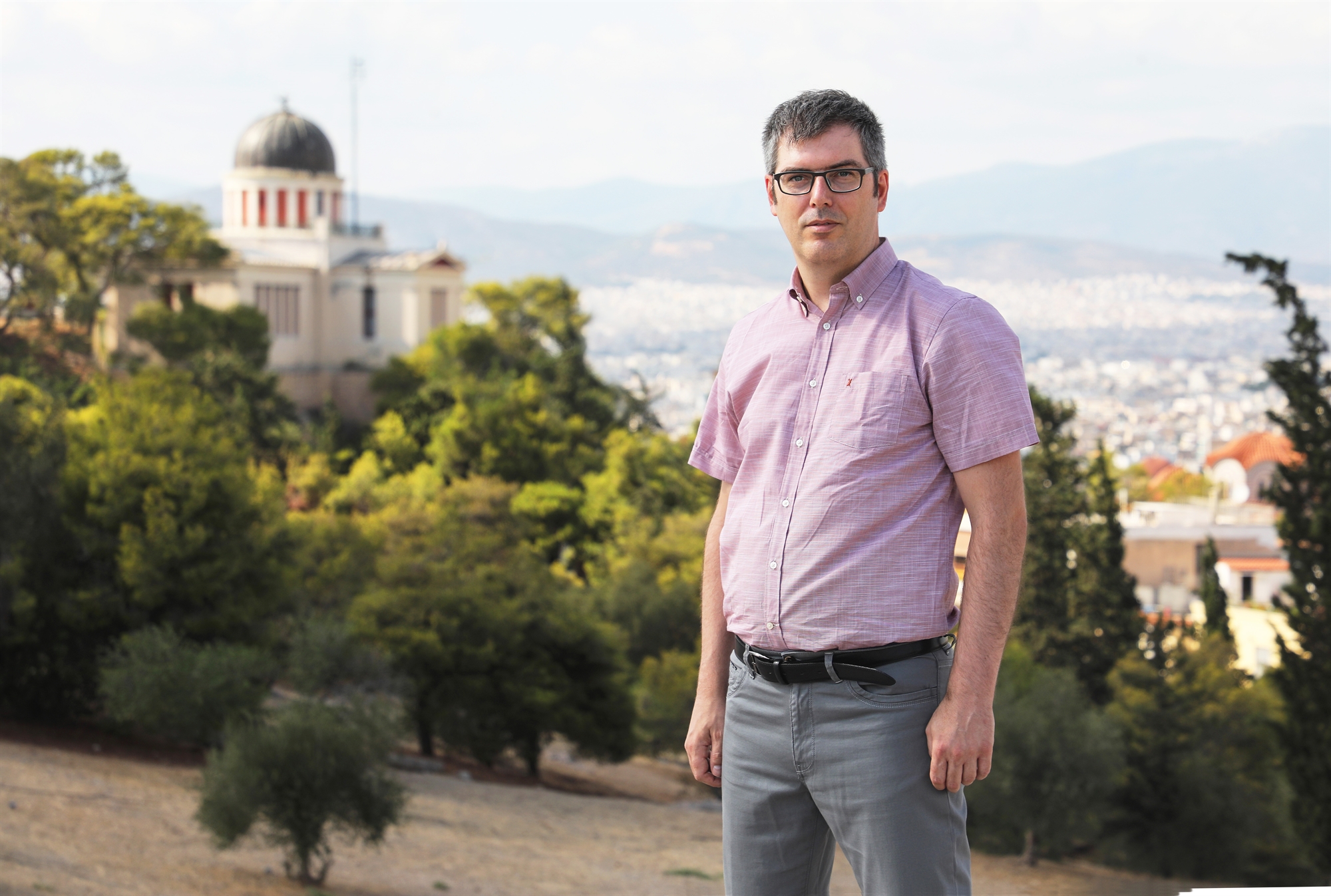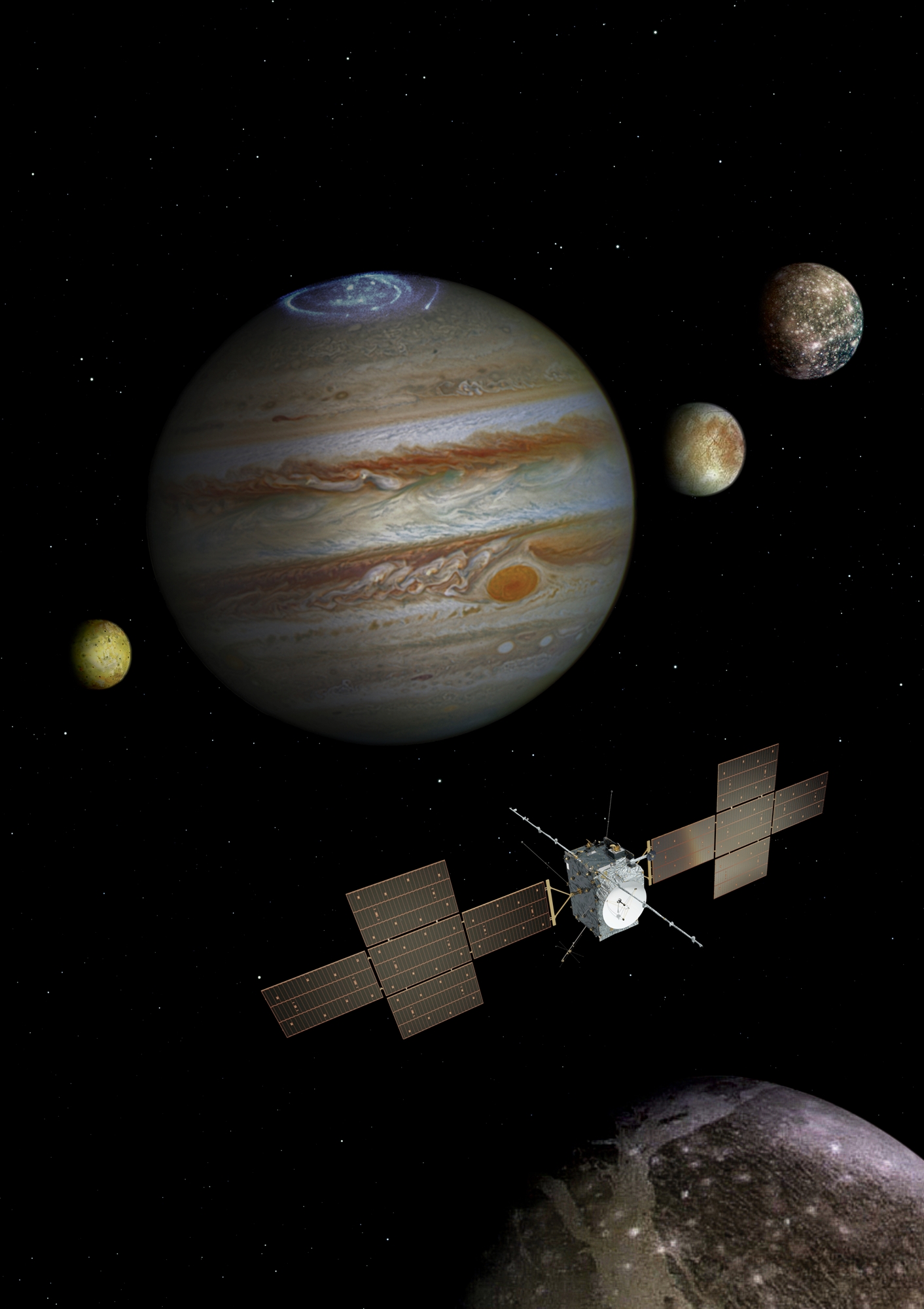
We agreed to meet a few days before he finished his holiday in Greece and returned to Germany. The death of Dionysus Simopoulos, eminent astrophysicist and honorary director of the Eugenides Planetarium, has just become known. For 43-year-old Ilias Roussos, also an astrophysicist and researcher in planetary science at the Department of Planets and Comets at the German Max Planck Institute, Simopoulos was an almost mythical figure. “I never met him, but I knew him from his work – from his books and Eugenideo, of course. He influenced my interest in astronomy in many ways. He brought space science closer to the Greeks. His offer is huge. And I don’t use the present tense by accident. And his work and his contributions continue and will continue – even after his death.”
The study of the universe has fascinated Mr. Roussos ever since he was in elementary school in Athens. He remembers the impact of the Voyager 2 photograph taken during the flyby of Neptune in 1989 and published at that time in dozens of publications. “Until the time I was only 10 years old, I had the impression that such distant planets could only be reached with the help of telescopes. I think that’s when I really thought – felt, if you will – for the first time, that space exploration would be my future,” he says.
It took several years to confirm this first “immature” feeling. They also provided two new missions with the Mars Pathfinder and Cassini spacecraft. The first landed on the surface of Mars in the summer of 1997, the second launched to Saturn in October of the same year. They so fascinated him that he considered the study of physics the only way forward. After receiving a physics degree from the University of Athens and a master’s degree from the International Space University in Strasbourg, the Greek scientist began research for his Max Planck doctoral thesis in 2004, analyzing measurements from Cassini, which orbited Saturn a few months earlier. That is, he was at the “heart” of the experiment of the American NASA and the European ESA, which he admired as a child. A matter of luck? “Yes, I was really lucky because I was in the right place at the right time. But I tried to create conditions so that if the opportunity presented itself, I would take it. In this sense, I probably took my fate into my own hands…” And that is how Max Planck became his scientific home.
Cassini was a unique mission because it was designed to be a systematic, high-quality experimental study of an extremely complex planetary system with rings and dozens of moons—62 known to date. What was its own role? “I participated in the program as a team member of the Magnetic Sphere Imaging Instrument (MIMI), one of 19 Cassini experiments. My research concerned the study of the space environment of Saturn, which is formed by its magnetosphere, that is, the region where the magnetic field that the planet itself “produces” dominates the magnetic field of the Sun. Saturn’s magnetic field captures large numbers of high-energy charged particles (eg, electrons, protons), forming radiation belts near the planet and its rings, similar to the Van Allen radiation belts that exist around the Earth. By studying them, we are trying to answer fundamental questions, such as whether the natural processes that give them high energies are applicable in different environments (for example, on Earth, Jupiter) or whether they emphasize some feature of Saturn’s magnetosphere. It is important to follow them for two more reasons. First, because these particles can cause damage to the spacecraft’s electronic systems or even “noise” in experimental measurements. And secondly, because they interact with the entire system of Saturn: for example, they bombard the surfaces and atmospheres of its satellites, changing their geophysical and chemical properties, which we observed using other experiments on Cassini or using telescopes from Earth. Ilyas Roussos.

Tests
In April 2023, the European Space Agency will launch a new Jupiter Icy Moons Explorer spacecraft. “JUICE, like juice in English – if you knew how many people are protesting against this name – to be precise, it is an abbreviation,” the Greek astrophysicist comments with a laugh. JUICE is expected to reach Jupiter in 2030. He will make detailed observations of the largest planet in the solar system and its three largest moons: Ganymede, Callisto and Europa. “We believe that these moons, or some of them – that is, we are almost certain, but this has yet to be proven – that they have vast oceans of water under the icy surface. We will map their surface, listen to the interior of these subterranean oceans, and assess whether they could harbor extraterrestrial life, even in microbial form, in order to conduct deeper astrobiological studies,” emphasizes Ilias Roussos, a study participant. planning for this mission, which has an initial budget of 850 million euros. At the same time, NASA’s Europa Clipper program will be “launched”, which also aims to explore the frozen oceans – if they exist – beneath Europa’s surface.
“The universe is not easy to explain. And a person is impatient, he wants everything in the shortest possible time, with the least effort … “.
So maybe life… outside? “It’s a cliché that I’m going to say, but based on simple logic and the law of probability, and given the size of the universe, there must be life in the Cosmos in many forms. And in our area, that is, in our own solar system, and in other galaxies. Of course, the possibilities are different, the evidence is different. Even though the numbers are on our side, we need something tangible.”
What, after all, do these quests give us? “Our daily life will not be changed by the data that will come from JUICE, Europa Clipper or any other similar program,” my interlocutor notes. “But they answer – at least that’s the goal – to humanity’s fundamental question: how is the universe organized? In addition, there are far from insignificant side benefits of space exploration, such as the resulting technological advances, which are important and very beneficial. In any case, the universe is not easy to explain. And a person is impatient, he wants everything in the shortest possible time, with the least effort. The aim of the study is to limit this trend as much as possible…”.
However, the design part seems to interest Ilias Roussos more than anything else in his work. “Yes, I will not hide it,” he confirms. “Now we have the opportunity to travel through some systems that until now – for centuries – we have observed only with the help of telescopes. It is very important that now we can go to some planets, land on their surface, take samples from them, and not just observe them. It’s amazing how such complex and responsible missions are planned. I wanted to be a part of this process and I’m happy that I did. Space for me is an inexhaustible source of inspiration and questions, everywhere I see unresolved problems that I try to find a solution to. This is my music!”

space tourism
I ask him if he would join a manned mission if given the opportunity. “For as long as I can remember, I dreamed about it. But everything is not so simple. The journey to the moon takes about three days. But to get to Jupiter, for example, we need decades – the spacecraft is much larger, very expensive, with great capabilities. And people willing to live in a spaceship for so long, I add.
“It’s not difficult, as strange as it sounds,” says Mr. Roussos. “When I was studying in France, I had Professor Nikolai Polyarenko, one of the designers of the first Soviet lunar landing craft during the Cold War. He told us that the technical difficulties were so great that if they wanted to beat the Americans in the space race, they had to admit that anyone who went to the moon probably couldn’t get back, they would stay there. And yet there were too many applicants. As for me, going back to your original question, I will probably go into space as a tourist someday. It’s already possible, it’s just that the price is so high that it’s the privilege of a small elite. I hope that in a few years it will become more accessible and I will be able to catch it … “.
Our conversation will end with a hypothetical question: if you could meet one of the scientists who paved the way to astrophysics and have already passed away, who would you choose? “American physicist James van Allen, after whom the radiation belts around the Earth are named. He was the supervisor of Mr. Crimizis, who told me that his speech was captivating, every conversation with him was like a lecture full of valuable knowledge. I would like to meet him. I would ask him a lot of questions about the “dawn” of space exploration, to which he made only a small contribution.”
Space Greeks
Are there many Greeks in the field of international space science? “Yes, and in fact they are participating with great success in space research programs abroad, with Dr. Stamatis Krimizis as their lead representative,” replies Ilias Roussos. “However, there are institutions in our country that produce valuable work and high-quality research, such as the Athens Observatory, the Universities of Patras and Thrace, the Academy of Athens. As well as a significant number of private companies involved in space technology, mainly due to our assistance to the European Space Agency. The Greek space community is quite strong and competitive, but fragmented, and its successes are mainly the result of the initiatives of individuals or groups, and not the result of a specific strategy of the Greek state.”
Source: Kathimerini
James Springer is a renowned author and opinion writer, known for his bold and thought-provoking articles on a wide range of topics. He currently works as a writer at 247 news reel, where he uses his unique voice and sharp wit to offer fresh perspectives on current events. His articles are widely read and shared and has earned him a reputation as a talented and insightful writer.